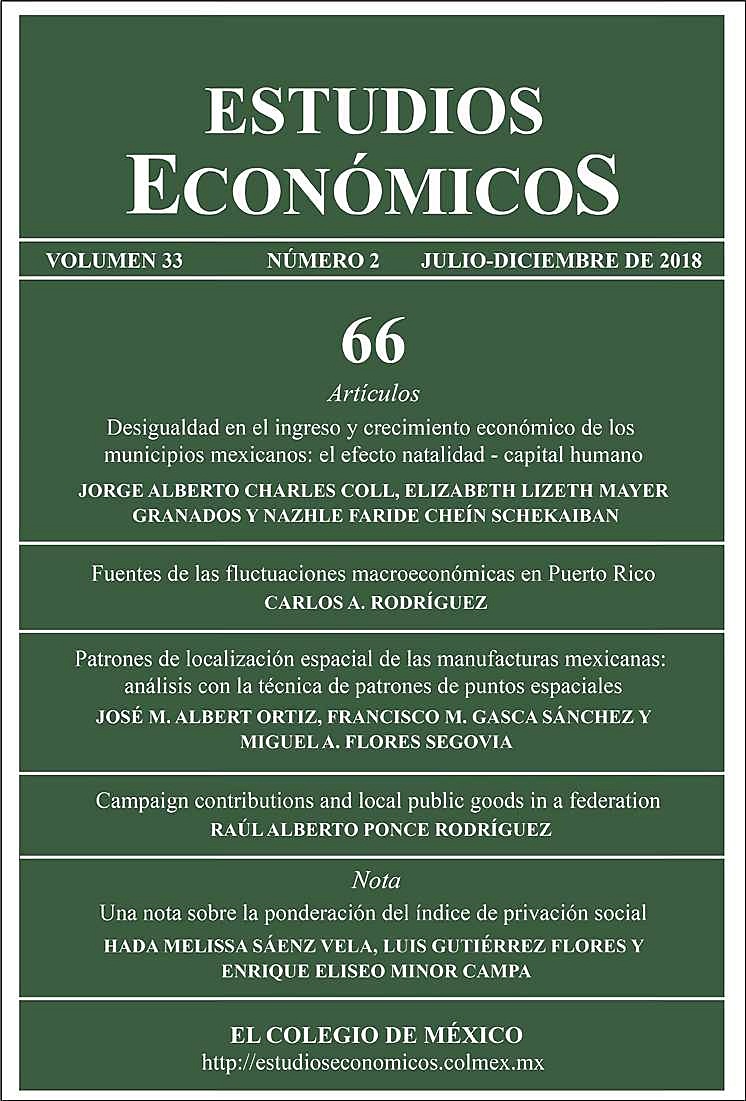Spatial location patterns of Mexican manufacturing: Analysis using the technique of spatial points patterns
Published 2018-07-01
Keywords
- Ripley’s K function,
- Mexi-can manufacturing,
- Distance-based methods,
- Spatial agglomerations
How to Cite
Abstract
This paper explores the spatial location patterns of firms in different sectors of the Mexican manufacturing industry. The analysis is carried out using a continuous spatial statistic approach by employing a K-function for each sector that is then compared to a Complete Spatial Randomness (CSR) distribution and other relevant benchmarks. We show that Mexican manufacturing follows a bimodal distribution and significant spatial concentrations are present for all manufacturing sec- tors at different distances. However, using the spatial distribution of the complete set of manufactures as a point of reference, variations in the spatial distribution are also found to exist.

